The Samsung Galaxy S21 and the Google Pixel 5 represent a subtle shift in priorities from these two old rivals and collaborators.
Formerly to be found competing at the very pinnacle of the smartphone market, these two prestigious phone franchises now occupy a slightly lower tier. One where several key compromises have been made in order to meet a more modest price point.
So how do these two not-quite-flagships stack up against one another? We scored both a decent 8 out of 10 in their respective reviews, so buckle up for a close fight.
Samsung Galaxy S21 vs Google Pixel 5 price and availability
The Samsung Galaxy S21 arrived in shops on January 29, 2021, for a starting price of $799 / £769 / AU$1,249 for the 128GB model. The 256GB model arrived at $849.99 / £819 / AU$1,349.
These prices are holding firm on the official Samsung website, but you’ll almost certainly be able to find a good deal on the S21 if you shop around. At the time of writing, you could get a 128GB Galaxy S21 from Amazon for $699 / £664.
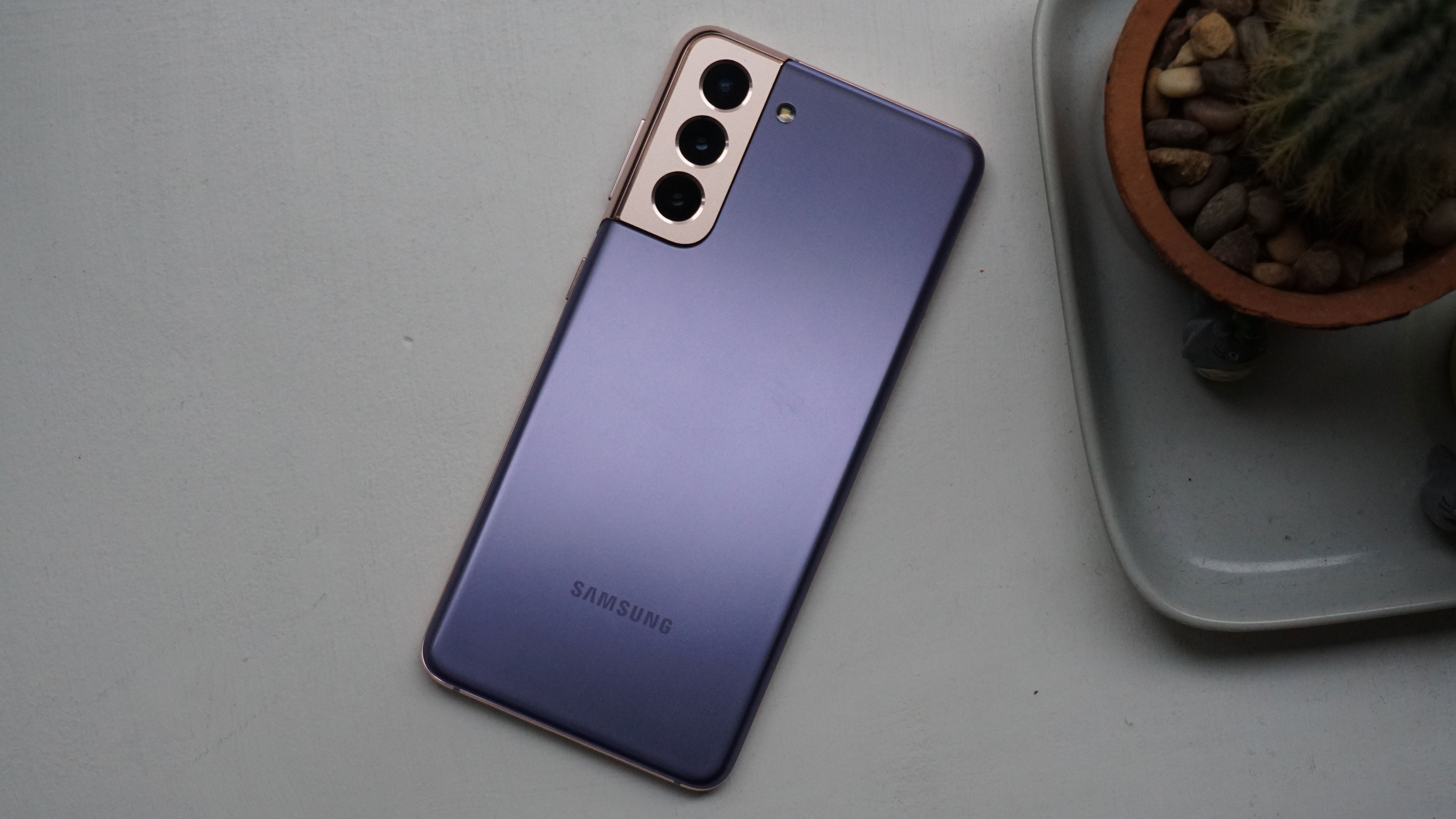
Google made its Pixel 5 available on October 15, 2020. The one available 128GB model arrived at $699 / £599 / AU$999 from the official Google Store, and these prices have largely held firm ever since.
Again, you can get a deal on the phone from third-party sellers, although these don’t tend to be as impressive as those of the Samsung, despite the Pixel 5’s greater age. At the time of writing, the Pixel 5 costs $699 / £574 on Amazon.
Design
Both of these phones have stepped away from the glass and metal flagship playbook, but in very different ways.
Google has dropped glass as a material altogether for the Pixel 5 – aside from its Gorilla Glass 6 display, of course. Housing this is a unibody aluminum chassis, with a curious matte bio-resin finish layered on top. Yes, Google has essentially covered its premium metal material with plastic.
This lends the Pixel a curiously utilitarian look and feel, but it also makes it stand out from a samey flagship crowd. The resin also covers up gaps in the body that enable wireless charging.
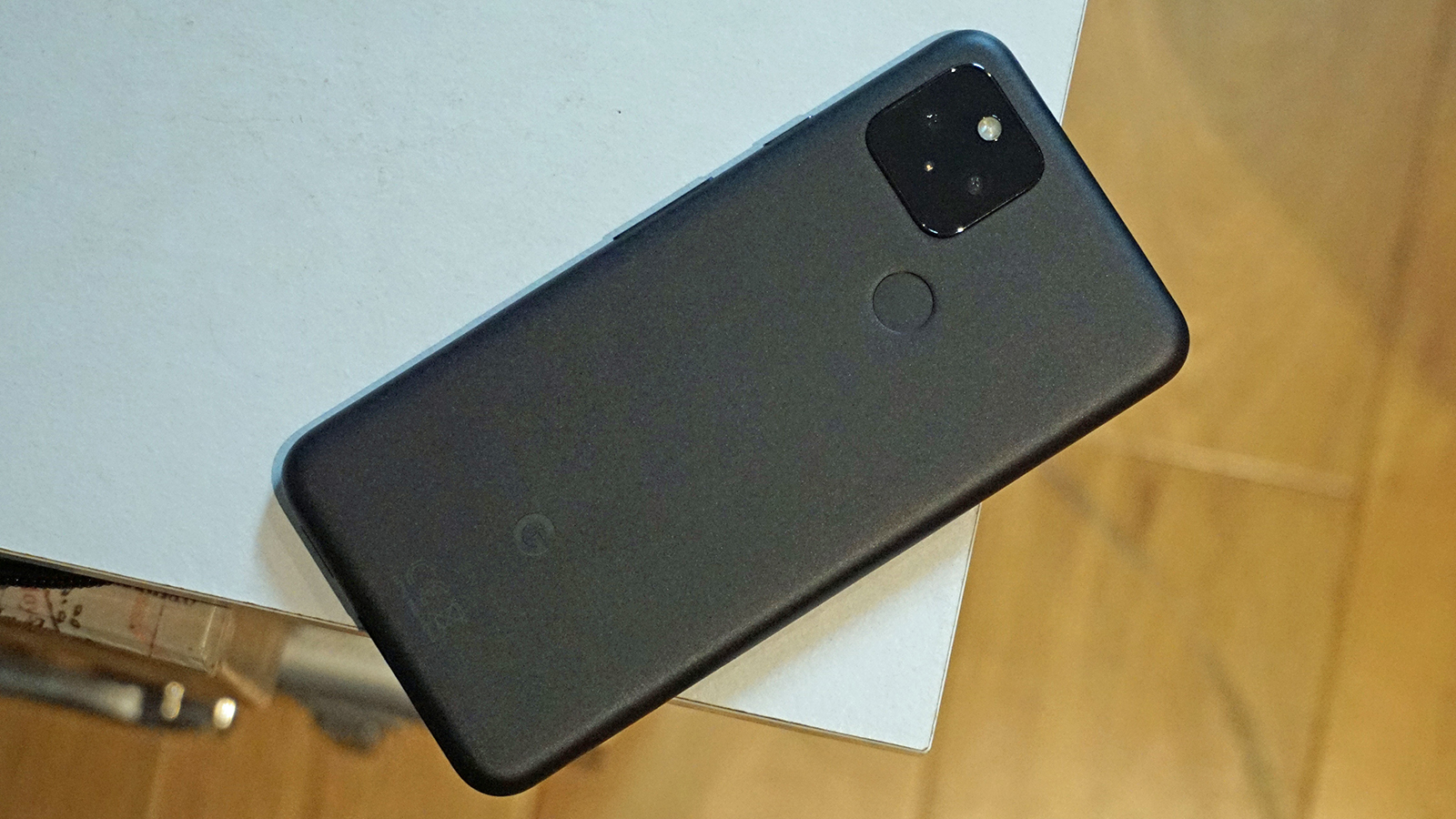
The Pixel 5 is a relatively small phone at 144.7 x 70.4 x 8mm and 151g. It’s smaller in almost every way than the Galaxy S21, which itself is only 151.7 x 71.2 x 7.9mm and 169g.
Samsung has also adopted plastic for its phone’s body – or ‘Glasstic’ to use the company’s own cringey word – but this time it feels like much more of an overt compromise. Both the Galaxy S21+ and the Galaxy S21 Ultra use glass within a similar design blueprint.
Still, the edge of the Galaxy S21 is metal, and it too looks quite distinctive in its own right. In particular, the phone’s swooping ‘Contour Cut’ camera module design is unique, and at least partially solves the conundrum of integrating a huge bump into the back of your phone.
Samsung’s color options are much more interesting than Google’s, too. A choice of Phantom Gray, Phantom White, Phantom Pink, and Phantom Violet far outstrips the Pixel 5’s somewhat blasé offering of Just Black and Sorta Sage.
Both phones have flat displays and hole-punch selfie cameras, but the Galaxy S21 places it centrally, while the Pixel 5 shifts it over to the left. We’re indifferent about the latter choice, but we wholeheartedly support the return to a more straightforward display.
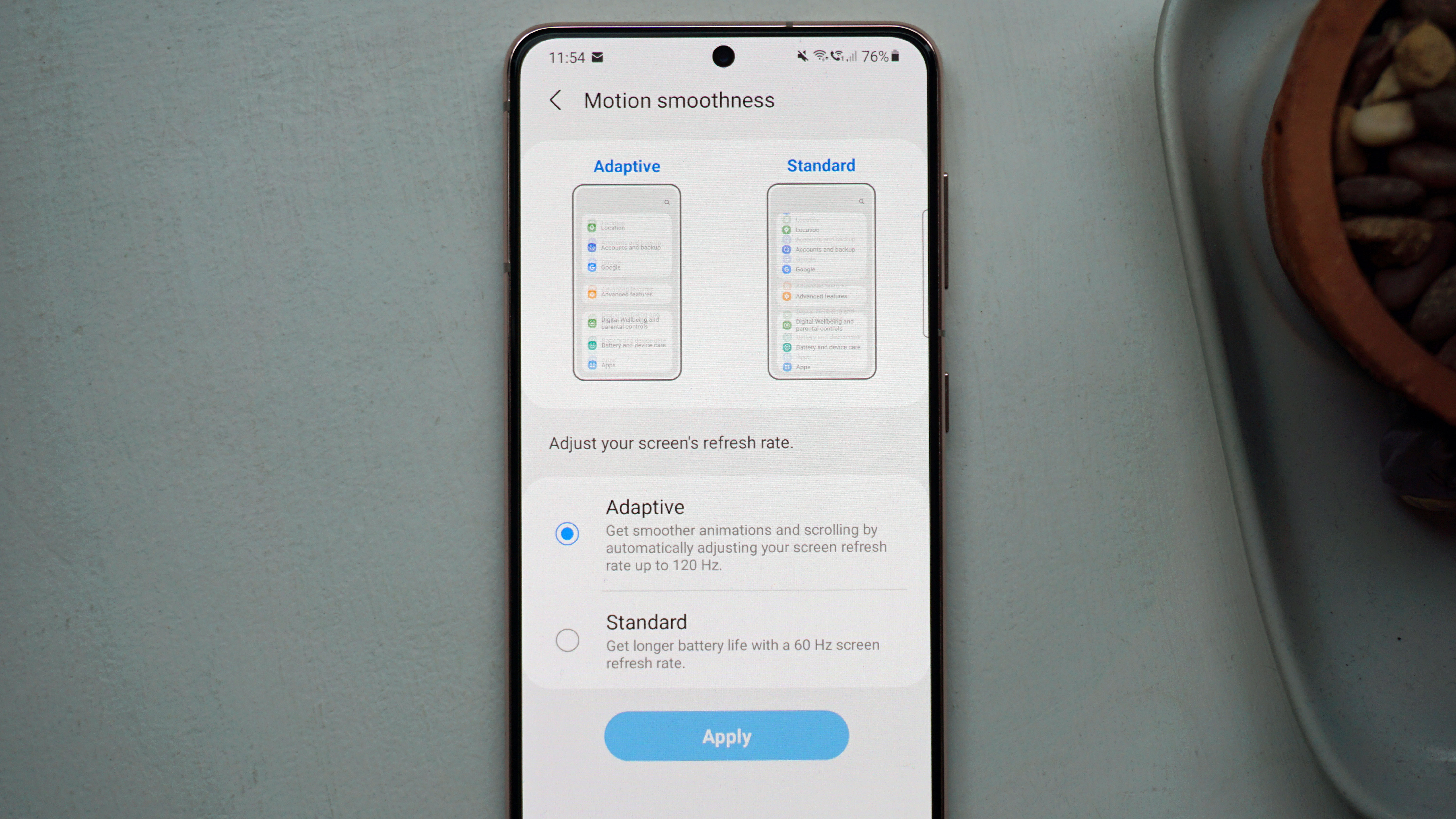
Another difference worth noting is the positioning of the fingerprint sensors. Samsung has opted for a more modern in-display solution, with a 70% bigger active area than before. Google, on the other hand, goes with an old-fashioned rear-mounted sensor. Neither is best in class, but we’d give Samsung the nod on this one.
Display
As we’ve just established, these are two of the smaller phones on the flagship scene, especially if you only consider Android devices.
This can be seen with the use of two similarly compact displays. The Samsung Galaxy S21 gets a 6.2-inch AMOLED, while the Pixel 5 goes with a 6-inch OLED.
Besides sharing a similarly punchy panel, they have similar FHD+ resolutions – 2,400 x 1,080 for the Galaxy S21 and 2,340 x 1,080 for the Pixel 5.
A more consequential advantage for the Galaxy S21 display appears with a 120Hz refresh rate. The Pixel 5 screen can only refresh at 90Hz. That still makes for a smooth experience, but the Galaxy S21 obviously pips it.
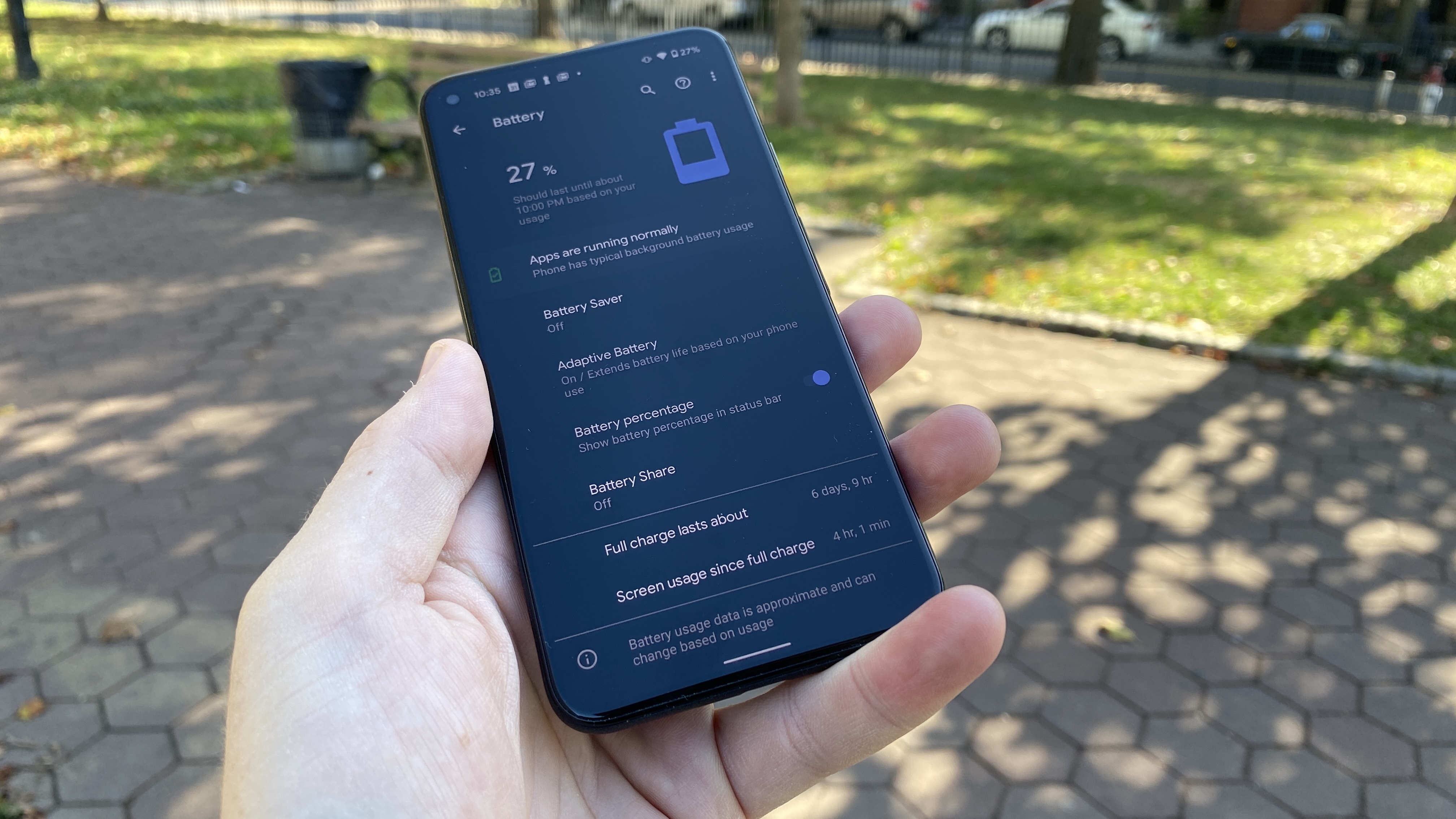
Even aside from the matter of screen fluidity, Samsung puts its display expertise to good use, with a superior peak brightness of around 1,300 nits. That’s around double what the Pixel 5 can achieve in bright outdoors conditions.
However, both phones are bursting with color, with support for HDR10+ output. But Samsung has the undeniable edge when it comes to display technology.
Cameras
Samsung and Google take very different approaches to their smartphone cameras.
Google is the master of image processing and computer vision – essentially using software smarts to bolster image quality. To that end, the Pixel 5 uses a simple 12.2-megapixel main camera with a humble Sony Exmor IMX363 sensor, which has been used in the Pixel range for years.
This is backed by a new 16-megapixel ultra-wide with a pretty narrow 107-degree viewing angle. Again, Google uses its image processing to fix the usual distortions that tend to plague ultra-wides, rather than any great optical advances. There’s no telephoto lens provision.
Samsung, by contrast, likes to throw its hardware weight around. In the case of the Galaxy S21, that means a triple-lens camera led by a 12-megapixel main sensor with an f/1.8 aperture. That’s backed by a meaty 64-megapixel telephoto and a 12-megapixel ultra-wide.
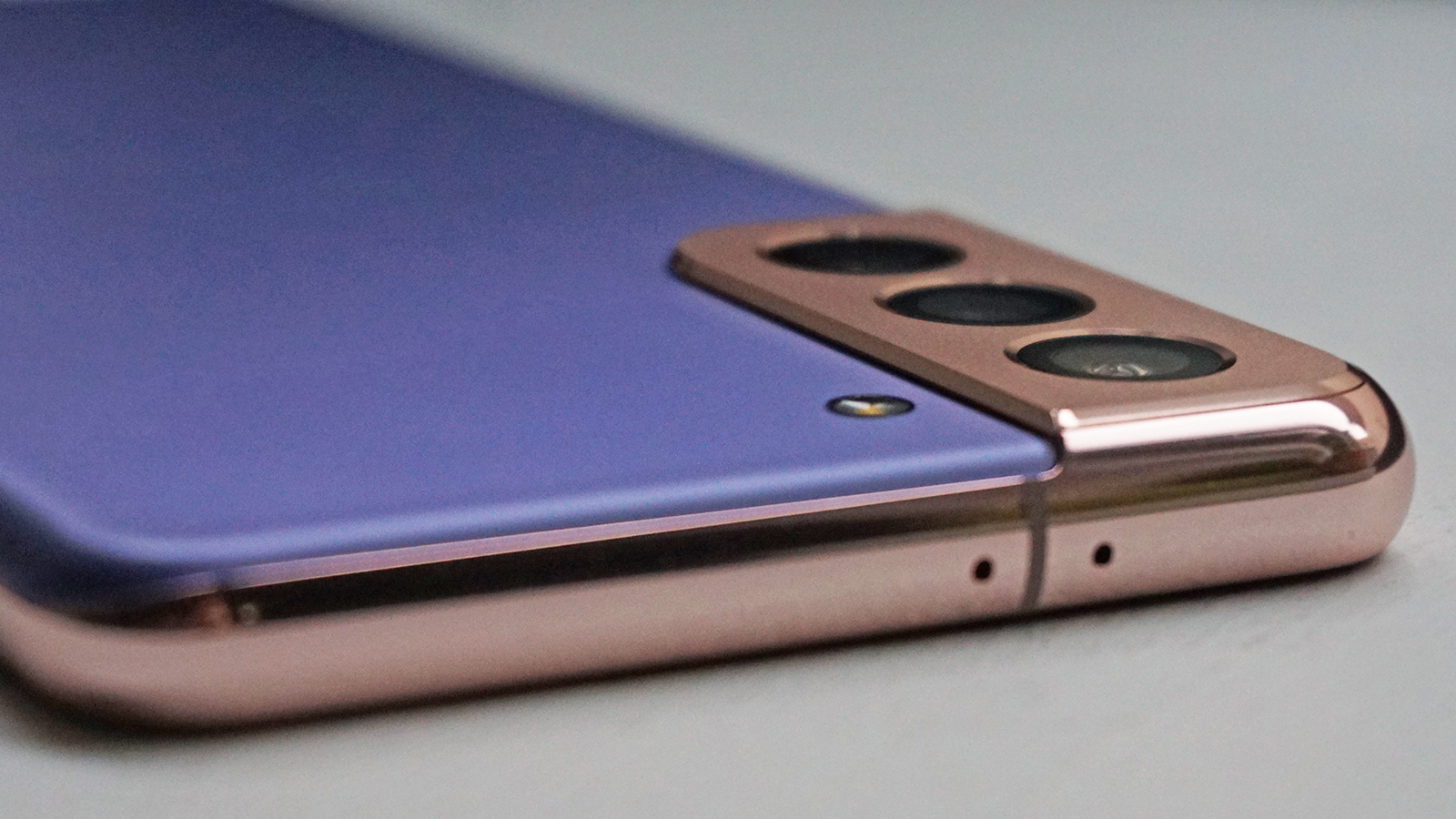
The Galaxy S21’s superior hardware captures much larger pixels than the Pixel 5, at 1.8μm pixels rather than 1.4μm pixels. It’s also able to capture 3x optical zoom shots with that sizeable telephoto sensor.
As is always the case with Samsung, there are plenty of modes to explore compared to the bare bones Pixel 5. Director’s View gives you a live view of all three rear lenses at once, and then empowers you to jump between them. Vlogger View enables you to record video from the front and rear cameras simultaneously.
There’s also the well-established Single Take, which uses AI and slow-motion recording to capture and process a range of image types in one go.
However, while it’s the more versatile camera, there’s a lot to be said for the Pixel 5’s point-and-shoot simplicity, not to mention its superior night shots and more natural color science. Samsung’s colors, as always, can be a little excessive and false.
On the video front, the Galaxy S21 can manage 8K at 24fps or 4K at 60fps, while the Pixel 5 can only hit 4K at 60fps.
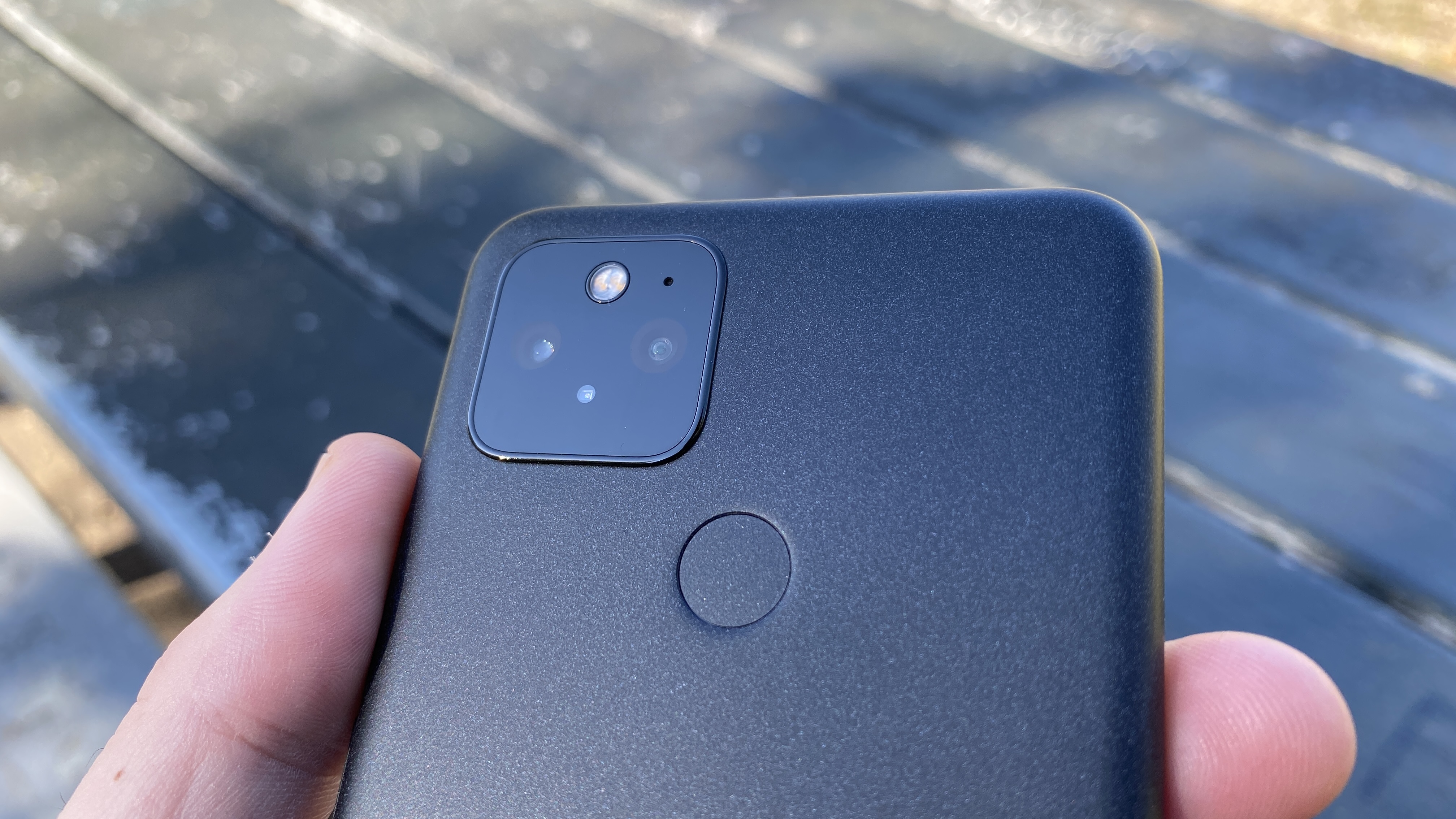
Specs and performance
Neither of these phones mixes it with the very best on performance terms, but the Galaxy S21 has the clear advantage for this particular fight.
Samsung’s fragmented hardware approach means that only the US and China versions of the Galaxy S21 get the Snapdragon 888. The more widely used international version uses the company’s own Exynos 2100, which isn’t quite as good.
It’s still faster than its Pixel 5 equivalent, though, with Google opting for a mid-range Snapdragon 765 in a bid to cut costs. This is a very capable runner, and we doubt that many people will notice the performance shortfall unless they boot up a game of Genshin Impact or COD Mobile.
However, the difference is most certainly there. Our Exynos 2100-powered Galaxy S21 scored 3,367 on the Geekbench 5 multi-core test, which is around double the 1,617 scored by the Pixel 5.
Both phones come with 8GB of RAM as standard, which ensures a smooth transition between open apps. Both phones also pack 128GB as standard, although you can also find a 256GB option for the Galaxy S21.
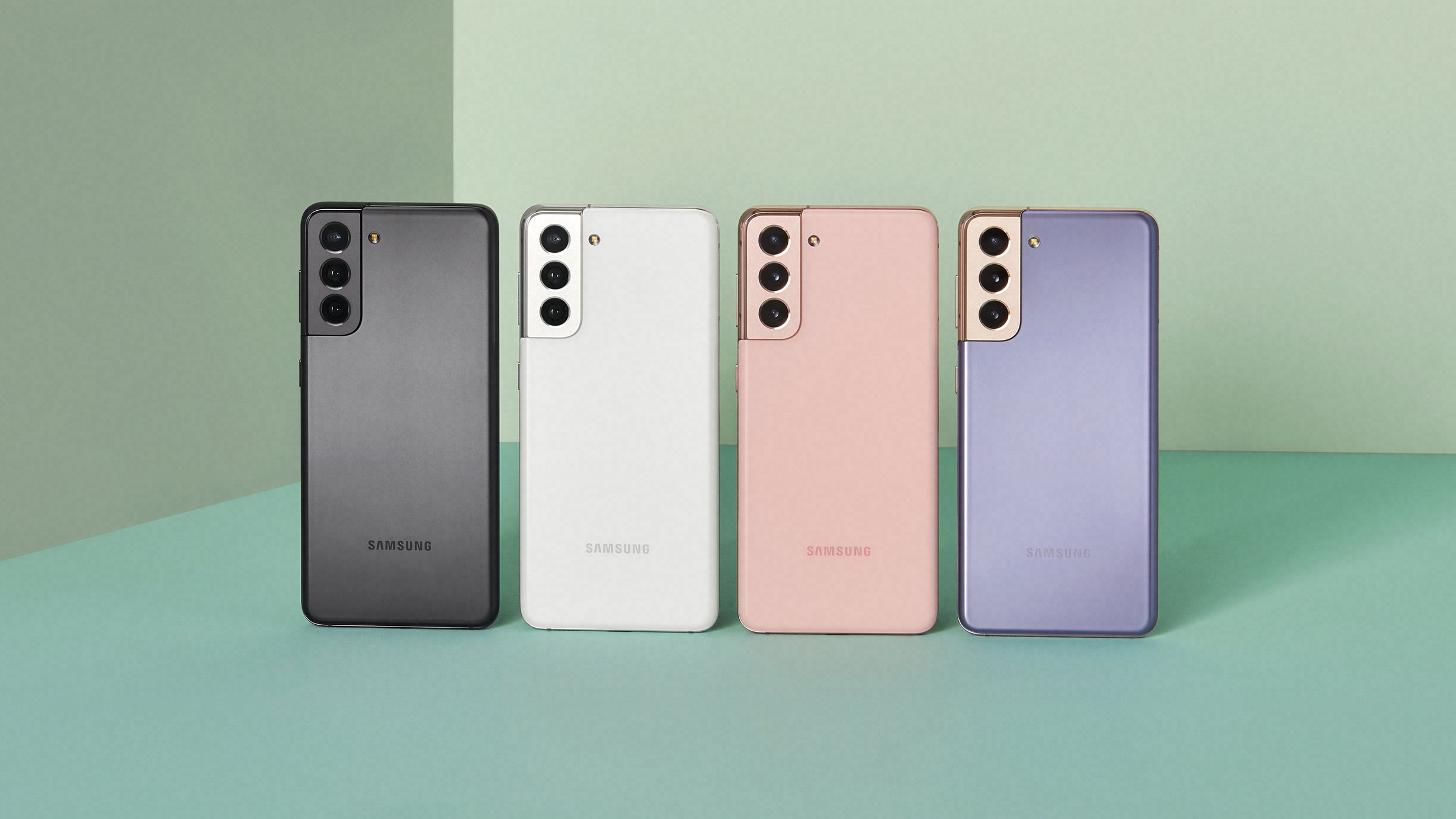
Where the Pixel 5 wins back points is through its unique use of stock Android 11. It’s pure, uncluttered, responsive, and very tasteful indeed.
There are no unwanted third-party apps with the Pixel 5 – just a handful of Google’s finest. What’s more, the Pixel 5 will receive an update to Android 12 before any other phone.
Certainly way before the Galaxy S21, at any rate. Samsung’s heavily modified One UI is somewhat divisive to say the least, with third-party and Samsung-brewed apps clashing with Google’s default provisions. The design is rather more garish, too – although to Samsung’s credit, this wanton excess has been reined in considerably in recent years.
Samsung’s constant tinkering also means that One UI is a way more customisable UI than stock Android. You’ll be able to theme it and tweak it to a far greater extent, whereas the Pixel 5 approach demands that you take it more at face value.
Battery life
The Samsung Galaxy S21 runs on a 4,000mAh battery, while the Pixel 5 utilises a 4,080mAh cell. It’s hardly a massive difference.
However, that size advantage, combined with a smaller, dimmer, and less fluid display would appear to give the Google phone an edge when it comes to stamina. The Galaxy S21 display is able to vary its refresh rate between 48 and 120Hz, which helps save energy – but it isn’t quite enough.
We found that the Galaxy S21 generally lasted through a full day of use on a single charge. However, using the phone’s GPS and other more power-intensive components could lead to an empty battery before bed time.
Testing the Pixel 5, we found that a full day of moderate to heavy use would leave us with plenty to spare. We felt quite confident pushing it with media playback and the like.
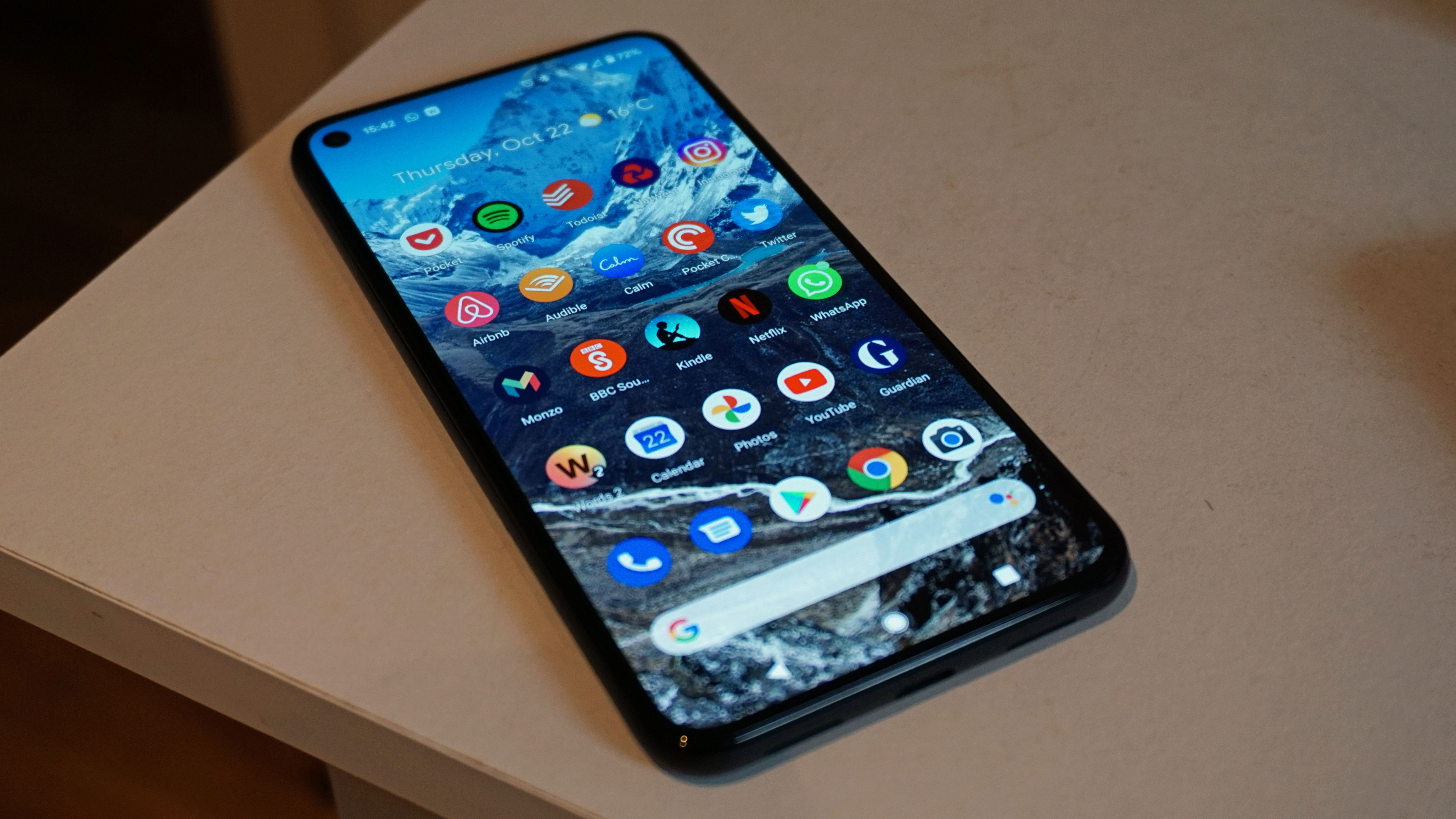
Both of these phones will basically require a nightly recharge, but the Pixel 5 seems to have the edge when it comes to pushing things with intensive usage.
The Galaxy S21 wins back a little of the stamina initiative with its support for 25W fast charging, however. This is far from the fastest-charging standard on the market – the OnePlus 9 gives you 65W – but it’s faster than the Pixel 5’s 18W.
Still, at least the Pixel 5 gives you that charger in the box. You’ll have to buy Samsung’s brick separately if you don’t already own one.
The Galaxy S21 also supports 15W wireless charging next to the Pixel 5’s 12W, and both phones support reverse charging for juicing up those power-starved accessories.
Takeaway
A straight fight between a Google Pixel phone and a mainline Samsung Galaxy S phone used to be a battle for the Android crown. That it isn’t any longer is both a little sad and rather exciting.
It’s great to see both of these giant companies thinking about how to add value to this end of the market, rather than simply engaging in yet another expensive component war. And they’ve come to fascinatingly different conclusions.
With the Pixel 5, Google’s smartphone has never been more of a showcase for its software. It’s less powerful than the Galaxy S21, has an inferior display, and its camera hardware is much less advanced.
Despite this, Google’s stock Android OS yields a slick experience, and the company’s unmatched image processing smarts mean that the Pixel 5 takes better, more balanced photos in a number of situations. It will also receive the next Android update way earlier.
If you’re a power user, a gamer, or you consume a lot of media on the go, then Samsung’s phone is going to give you more of what you want. But those who want the purest, cleanest, least fussy smartphone experience possible will be better off going all in with Google.
from TechRadar - All the latest technology news https://ift.tt/3o6top6
